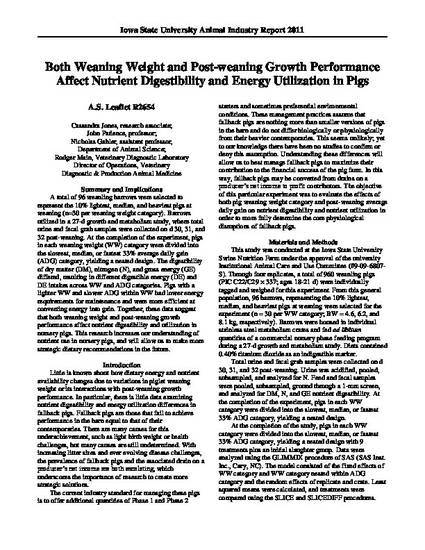
A total of 96 weanling barrows were selected to represent the 10% lightest, median, and heaviest pigs at weaning (n=30 per weaning weight category). Barrows utilized in a 27-d growth and metabolism study, where total urine and fecal grab samples were collected on d 30, 31, and 32 post-weaning. At the completion of the experiment, pigs in each weaning weight (WW) category were divided into the slowest, median, or fastest 33% average daily gain (ADG) category, yielding a nested design. The digestibility of dry matter (DM), nitrogen (N), and gross energy (GE) differed, resulting in different digestible energy (DE) and DE intakes across WW and ADG categories. Pigs with a lighter WW and slower ADG within WW had lower energy requirements for maintenance and were more efficient at converting energy into gain. Together, these data suggest that both weaning weight and post-weaning growth performance affect nutrient digestibility and utilization in nursery pigs. This research increases our understanding of nutrient use in nursery pigs, and will allow us to make more strategic dietary recommendations in the future.
Available at: http://works.bepress.com/john-patience/13/
